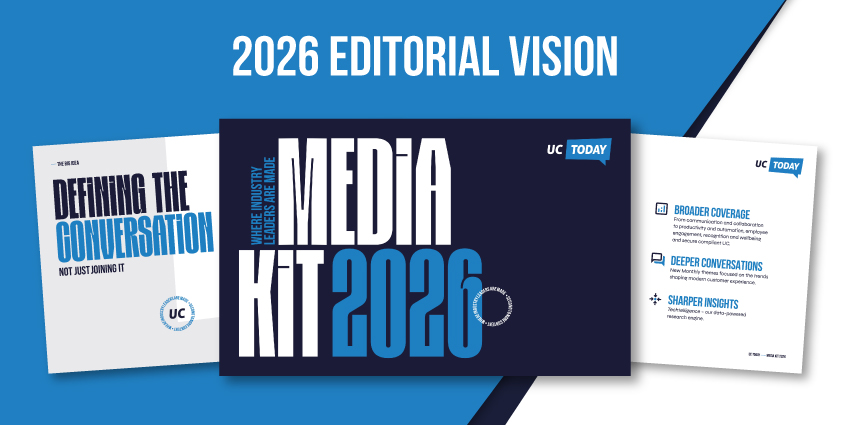We all know how valuable AI voice assistants are in the enterprise right now. They’re not just handling customer support calls anymore; they’re helping to surface useful insights, improve employee productivity, and make data more actionable.
But bringing these assistants into your workplace means asking an important question. Do you build a solution from scratch? That gives you control but is slow, expensive, and complicated. Or do you buy a ready-made assistant bundled into Zoom or Cisco or whatever platform you use? That’s faster, but it’s locked in, rigid, and maybe not up to your internal intelligence or privacy standards.
Some forward-thinking vendors, like Bandwidth, are exploring a slightly different option. Bandwidth’s CPaaS “Maestro” platform and the “AI Bridge” tool give you a bit of both worlds – you can plug pre-existing AI models into your existing tools, and customize without the coding headache, without being locked into a single ecosystem.
So, when exactly does an approach like this make sense?
AI Voice Assistants: The Opportunity in UC
You’re missing an opportunity if you’re still using AI voice assistants exclusively for your smart IVR system or customer service. AI tools tuned to understand voice have a role to play in virtually every part of your business (if you can embed them into the right workflows).
There’s huge potential across your UC stack, Teams, Zoom, Cisco, and mobile agents in the field. Real-time meeting summaries, voice-driven IT helpdesks, instant field escalations (“Hey AI, schedule that technician”), employee sentiment checks, and HR voice bots; it’s a totally new era.
The problem is that finding AI tools that fit into your entire tech stack can be difficult. Some options are designed specifically for certain platforms (like Zoom’s AI Companion), which means unless you’re using Zoom as your UC system, contact center, and virtual workplace, you’ll need to switch to different AI tools as you jump between apps.
Even if you can find something that covers everything, you’re left with limited control and no option to experiment with other models and tools as your business needs change, unless you start building something complicated from scratch.
AI Voice Assistants: The Build vs. Buy Struggle
Building a voice assistant from scratch feels like the ultimate way to maintain control over everything. You get to pick which tools it’ll work with, what kind of data it sources, what features it will have – everything. But that’s only if you have the resources to bring that vision to life.
You’ll need ASR/NLP engineers, DevOps for voice, continuous data labeling, carrier-grade telecom integration, and ongoing Telephony DevOps. That’s a lot of plates to spin.
On the other side, buying prebuilt voice assistants, like Zoom AI Companion or Cisco’s built-in bots, gets you something off the shelf quickly. Of course, then you’re tethered. You rely on that vendor’s AI models, roadmap, and data policies. That’s vendor lock-in, and it often means giving up control over data ownership and privacy, as well as opportunities to flex.
Most leaders want AI power without paying the full infrastructure toll. They want intelligent conversations and multilingual support, and they want to own how it’s used and where the data lives. That’s where the CPaaS approach starts to shine a little brighter.
Meet the Middle Path: CPaaS and Bandwidth AI Bridge
So, what if you could have more freedom than building an AI voice assistant from scratch or relying on one that already comes into your platform?
CPaaS innovators like Bandwidth believe this is the future. With solutions like Maestro and AI Bridge, you get to pick your favorite AI model (Dialogflow, Cognigy, OpenAI, etc), then plug it into your voice systems. No extra infrastructure or coding to manage.
AI Bridge equips enterprises to ditch old-school IVRs and deploy “full-service conversational AI bot platforms” in hours. They can even embed AI into different workflows, creating voice bots that support employees, coach teams, manage performance, analyze sentiment in calls, and more.
The Maestro platform uses low-code orchestration to embed smart logic, real-time failover, bot-to-agent handoff, even pressure-tested call recording, and consent flows.
AI Bridge also shines in the flexibility department. Integration partner google-cloud Dialogflow? Sure. Cognitive bots from Cognigy? Absolutely. You retain ownership of your model, data, and chatbot architecture, without building telecom plumbing from zero. It delivers AI freedom without the usual friction.
Because it’s API-first, AI Bridge works seamlessly with literally any UC stack, Teams, Zoom, and even frontline mobile apps. And that’s huge. You don’t have to rip out your existing environment. You don’t have to choose heavy developer resources. You just plug your AI in, let Maestro handle the flows, and you’re voice-automated without vendor handcuffs.
Enterprise Use Cases: Enabled by AI Bridge
The CPaaS-first approach to integrating AI voice assistants into communications technology is reshaping how companies think about digital upgrades. Solutions like Maestro, with its no-code orchestration layer, mean you don’t need specialist skills to start adding your favorite AI tools to the parts of your business where they’ll have the biggest impact.
Let’s look at just some of the teams that can take advantage of this:
- Contact Centers: This one’s obvious, but we’re talking about more than just routing calls. Picture an intelligent assistant that answers a support line, authenticates the caller, gathers key context (like “I’m calling about an overcharge”), and then transfers them to a live agent, without repeating anything. Behind the scenes, Maestro just aligns everything automatically.
- Field & Mobile Teams: Field agents are often stuck toggling between voice, text, and apps while trying to solve problems on the fly. With Bandwidth’s AI Bridge, voicebots can handle incident reporting, rescheduling, or equipment lookups, even over regular phone calls, no special app required.
- Internal Operations: Enterprises are deploying internal AI voice assistants for HR and IT, too. Say someone calls the IT help line to reset their VPN credentials. An AI voice assistant handles authentication, logs the ticket in ServiceNow, and texts the confirmation code. Escalation is easy, and hand-offs maintain context.
All of this is orchestrated inside Maestro and delivered via Bandwidth’s voice network. It’s AI made usable, wherever people are already communicating.
Competing Solutions: The Rise of AI Powered by CPaaS
Let’s be honest: there are a lot of players in the AI Voice Assistants space, and they’re not all created equal. We’ve already mentioned the companies that embed AI tools directly into their tools. We’ve got Zoom with AI Companion, Microsoft with Copilot, and Cisco with Webex Assistant.
Many of these solutions give you some flexibility for customizing your tools, but not a lot of extensive control. Plus, they’re mostly confined to their own ecosystems, although Microsoft is experimenting with partnerships with other AI vendors through Azure AI Foundry.
On the other side of the fence, you’ve got tools for building AI systems from scratch – but again, these are complex, expensive, and difficult to access for a lot of smaller teams.
Then you’ve got the “bridge” champions, like Bandwidth. Even here, there are competitors. Twilio, Ada, and Conversica all give you access to deep API access, tons of control, and powerful AI integrations. But you also need serious developer resources with many of these solutions to make everything work.
Orchestration can be a beast, and your UC teams may not want to manage call logic on top of everything else. Bandwidth offers something special with the Maestro platform by giving you the freedom without the complexity. No-code orchestration, full call control, and compliance are all part of the package.
Choosing Your Solution for AI Voice Assistants
If you’re exhausted by the build vs buy debate, and you think a “bridge” option may offer a flexible (less painful) alternative, you’ve still got some comparing to do. Here’s what we recommend looking for when you’re shopping for an AI CPaaS vendor:
- Customization: You should be able to fine-tune intents, train on your domain language, and shape the customer experience, not just pick from a dropdown of pre-built flows. Ask vendors: Can we bring our own model? Can we override defaults?
- Latency and Call Quality: Especially for live interactions in contact centers, field calls, or voice-triggered escalations. AI doesn’t feel smart if it lags. Bandwidth controls the PSTN layer, so audio travels directly without third-party hops.
- Escalation & Context Retention: When a bot hands off to an agent, what happens to the context? Most systems drop the thread. Bandwidth’s flow logic keeps the conversation state, caller history, and even sentiment tracking intact during the handoff.
- Integration with CRM & UC Tools: If your AI can’t update Salesforce, create Zendesk tickets, or work with Zoom/Teams routing, what’s the point? A strong CPaaS solution will sit in the middle of everything, saving you time and energy.
- Compliance, Privacy, and Control: Especially in healthcare, finance, and enterprise IT, voice data is sensitive. You want full control over recordings, retention policies, and where your AI model lives. Make sure you’re keeping all that in mind.
The final thing to consider? Simplicity. Composable AI voice assistants are great, but only if you can really take advantage of them. The easier a platform is to use, the better.
Composable AI Voice Assistants: The Bridge to the Future
If 2023 was the year of generative AI hype, 2025 is shaping up to be the year of composable AI, and AI Voice Assistants you can choose, customize, and integrate into existing workflows with CPaaS are right at the center of that shift.
We’re moving away from monolithic, bundled “AI-in-a-box” solutions and into modular, plug-and-play ecosystems. Enterprises don’t want to be told which bot they have to use, nor do they want to build everything from scratch. They want to integrate best-in-class components, from language models and transcription engines to telephony APIs and analytics platforms, and make them work together in a way that reflects their own workflows.
This is exactly where Bandwidth shines. Unlike bundled platforms, Bandwidth doesn’t force you into a specific stack. You bring the AI brains, and they’ll provide the telecom spine, orchestration tools, and regulatory muscle to make it production-ready.
Don’t Pick a Side: Pick Control
So what’s the answer? Build, buy, or bridge?
- Build your own voice AI stack if you have deep in-house AI/telephony expertise and truly unique use cases (think Tier 1 banks or healthcare conglomerates with strict regulatory overlays).
- Buy a packaged assistant if you need something fast, lightweight, and internal, like meeting summaries or chatbot-style support for low-volume workflows.
- But for most enterprises, the smartest path is to bridge. Use platforms like Bandwidth AI Bridge to plug in the AI Voice Assistant that fits your business, without taking on the burden of telecom engineering or giving away your flexibility to a pre-baked vendor.
The real win? You stay in control. You get world-class call quality, native compliance, and a no-code flow designer (Maestro) that lets your UC team run the show.







